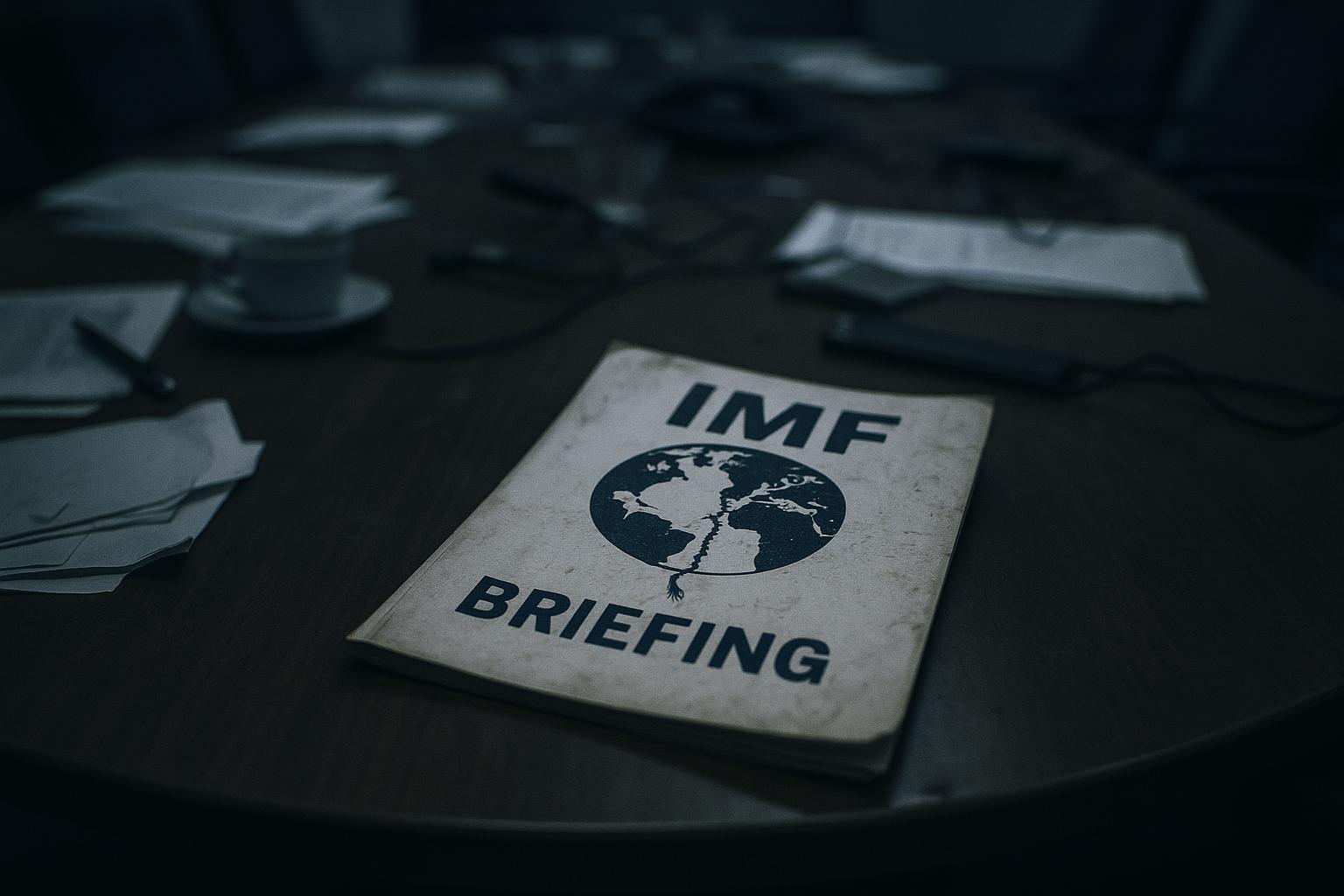Each October, Washington DC hosts a high-stakes gathering of some 10,000 finance ministers and bankers from nearly 190 nations, marking the annual meetings of the International Monetary Fund (IMF), the World Bank, and the G7 group of the world’s wealthiest economies. Against the backdrop of autumn’s russet foliage, the city becomes a hub of anxious discussions, reflecting deep uncertainty about the global financial landscape. Veteran observers note a palpable tension this year, with troubles stirring from unpredictable geopolitical moves, overheated markets, and the spectre of mounting debt risks.
The IMF’s Kristalina Georgieva captured the mood during her address, acknowledging that “forces of change are making the global economy less predictable,” triggering widespread anxiety and public demands for better economic opportunities. While there is hope for progress, the financial world faces a perfect storm of threats moving rapidly in the wrong direction—threats that risk devastating savings, wealth, and broader prosperity if left unchecked.
Central among these dangers is the escalating trade conflict between the United States and China. Donald Trump’s aggressive tariffs, including a pledge of a minimum 100% tariff on Chinese goods entering the U.S., and China’s retaliatory export ban on rare earth metals, have rattled markets and industry alike. Rare earths, crucial for sectors ranging from defence to high-tech and electric vehicles, are almost entirely controlled by China, making these export restrictions highly disruptive. The impact is not confined to bilateral relations; the World Trade Organization’s Director-General Ngozi Okonjo-Iweala has highlighted the potential for a full economic decoupling to slash global GDP by up to 7% over the long term, disproportionately harming developing countries reliant on international trade links.
Despite the severity of these measures, President Trump himself recently acknowledged the tariffs’ unsustainability, justifying them as necessary responses to China’s tightening control over rare earth exports. Meanwhile, manufacturers in China are already pivoting away from the U.S. market amidst the so-called “tariff rollercoaster,” seeking new customers across Europe, Latin America, the Middle East, and Africa, as U.S. sales dwindle despite China’s overall export growth.
These geopolitical and trade tensions have yet to be fully accounted for in global growth forecasts. The IMF recently revised its global real GDP growth projection upwards to 3.2% for 2025, reflecting some optimism, yet warned that the outlook could worsen significantly if trade disputes deepen further. Georgieva also expressed hope for diplomatic resolution to preserve the rare earths supply chain—vital for the global economy—underscoring the fragile balance the world now faces.
Alongside geopolitical risks, others loom large in financial markets. American stock prices have surged to record, possibly inflated by hype around artificial intelligence (AI), with tech giants like Nvidia, Microsoft, Apple, Amazon, and Meta underpinning global equity valuations. However, the intense cross-investments within AI-related companies have sparked fears of a speculative bubble reminiscent of the dotcom crash in 2000, threatening the pensions and savings of millions if it bursts.
Broader debt concerns exacerbate the gloom. Public debt levels in the G7 nations stand at unprecedented highs since World War II, with Britain owing around £2.9 trillion and the U.S. at a staggering $28 trillion. Particularly alarming is the growth of “shadow” banking and unregulated private credit markets, which have been largely exempt from post-2008 financial regulations. Recent bankruptcies among companies heavily financed by such private lenders have raised fears of unseen risks lurking beneath the surface of the global financial system. Jamie Dimon, chairman of JP Morgan, described these failures as “cockroaches”—a warning that more problems are likely to emerge.
The UK’s economic predicament is especially delicate. Despite promises to repair foundational problems, Labour’s fiscal policies have so far failed to inspire confidence. Britain’s bond yields remain stubbornly higher than other G7 nations, reflecting deep scepticism from investors over fiscal credibility. Inflation remains an outlier, with consumer prices rising at 3.7%, squeezing the very workers Labour aims to support, while increases in national insurance contributions are depressing employment. The upcoming budget from Chancellor Rachel Reeves is expected to be a critical test, but her options appear limited to tax rises that could further stifle growth.
History offers stark warnings. The current atmosphere echoes previous financial crises, including the 1992 Exchange Rate Mechanism collapse and the 2008 global financial meltdown, both of which led to severe economic hardship and political upheaval. The build-up of risk factors—trade wars, overinflated tech valuations, soaring debt, and fragile private credit—resembles a “doom loop” with the potential to trigger a crisis that could devastate national economies and living standards.
As the world’s financial leaders convene in Washington, their cautious responses make clear the scale of the challenge. While diplomatic efforts to ease U.S.-China tensions and regulate emerging financial risks continue, the prospect of a significant economic crisis looms large. For Britain, the task is particularly urgent and complex, with political leadership under intense scrutiny amid the growing threats to economic stability and public confidence.
📌 Reference Map:
- Paragraph 1 – [1], [4]
- Paragraph 2 – [1], [2], [5]
- Paragraph 3 – [1], [3], [4], [7]
- Paragraph 4 – [2], [5]
- Paragraph 5 – [1]
- Paragraph 6 – [1]
- Paragraph 7 – [1], [6]
- Paragraph 8 – [1]
- Paragraph 9 – [1]
Source: Noah Wire Services
